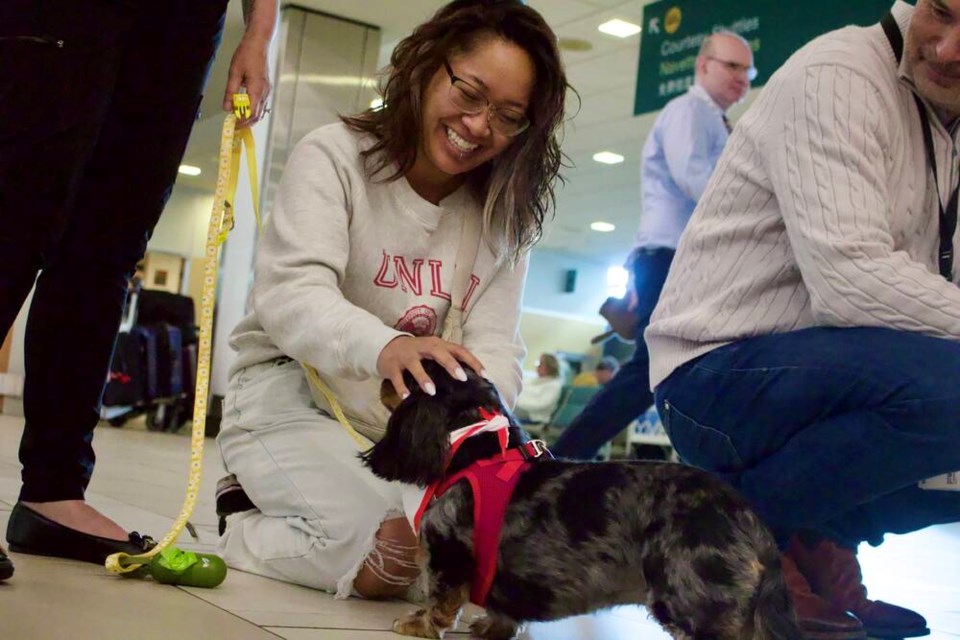Five four-legged volunteers welcomed travellers to Vancouver International Airport (YVR) with kisses and invitations for belly rubs on Wednesday morning.
The therapy dogs, Trigzee, Kobe, Freya, Peyton and Grover, are part of the Less Airport Stress Initiative (LASI) to help visitors relieve stress and enjoy their stay at YVR.
One of the families they encountered was Matt and Karyn Anderson, who stopped by YVR with son Joey during their visit from Victoria, sa国际传媒
Karyn told the Richmond News it was their first time meeting LASI ambassadors, and it was “amazing” to see the dogs.
“As soon as Joey saw the dogs… he (had) a big smile on his face. And we also got smiles on our faces and were like, ‘Let’s go see the dogs!’” said Matt, who added that the encounter has helped relieve the family’s stress “a little bit.”
“It’s really cool. We like dogs, our little boy loves dogs,” he said.
The LASI program, held in partnership with St. John Ambulance, was first introduced in 2017 and has since become a permanent fixture at YVR.
Eric Pateman, YVR’s chief experience officer, told the News that 75 per cent of people in an airport “feel some sort of anxiety or stress for travelling.”
Not only are the therapy dogs popular with travellers, but they’re also a hit with the 26,000 airport employees.
“Almost all of our staff, I know, come down on their lunch breaks and just get their cuddles in,” said Pateman.
And the program’s success is measured by one thing — smiles.
“For us, it’s an investment that you put out to enhance that guest experience. There are no traditional (key performance indicators),” Pateman explained.
“It’s an easy way to just put smiles on people’s faces.”
Under the current program, two therapy dogs are available before security in YVR terminals five days a week from 11 a.m. to 2 p.m.
Therapy dogs from St. John Ambulance are pet dogs volunteering with their owners who usually come in “really good behaviours,” said St John Ambulance’s provincial volunteer coordinator Susan Bakajic.
They are not required to go through training and can start working as therapy dogs once they pass an assessment.
To become a YVR ambassador dog, Bakajic explained, the dog must be calm and able to handle crowds. They can be any shape or size, as long as they’re at least one year old.
“We are placing the dogs at peak times when there’s a lot of travellers in the building. And so we do want to make sure they can handle the noise and the different smells and the environment,” said Bakajic.
Old dogs may sometimes have to teach the youngsters how to do the job, and a few bribes with treats might be necessary, but the ambassadors are usually ready to work when they arrive at the airport.
Although the LASI program is currently only available five days a week, Pateman is hoping to extend it to seven days a week by winter. Depending on the availability of volunteers, he also wants to extend the hours.
For now, however, the program will be limited to dogs.
“(For dogs) the training programs would be easier. It’s really hard to train a snake,” said Pateman, who added there might be other opportunities involving animals to improve guest experience in the future.



